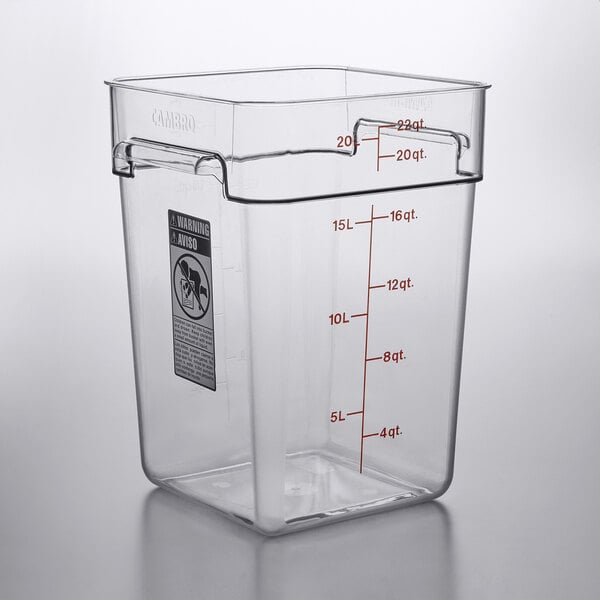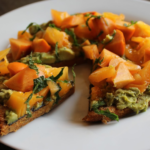
Wondering how to Daniel Fast on a budget? In this post I share a big list of tips, cheap Daniel Fast meals, and shopping list for 2024. Keep reading to download the free PDF Shopping List and get links to purchase ingredients online.
What is a Daniel Fast?
Daniel Fast is a term used to describe how Daniel, in the Old Testament of the bible, fasted during his time in captivity. It is a plant based vegan diet. This is a great fast to start if you’re on a budget.
If you’re ready to minimize your grocery budget, keep reading.
Which cheap groceries to avoid
When grocery shopping on a budget, it’s important to memorize the cheapest groceries so you can easily plan your monthly shopping list. When shopping for cheap groceries, you also want to keep in mind which foods are healthy, and which foods can harm our health. In my opinion, it is better to purchase some items that are a little more expensive if they will make me feel good and healthy, rather than purchasing foods that are cheap but will make me feel sick and unhealthy.
Here’s the type of cheap foods to avoid purchasing:
- Highly processed foods
- Foods that contribute to diet related diseases, such as heart disease, diabetes and certain cancers
- Foods that contain unnecessary food additives such as food colorings and preservatives
- Foods that you are allergic to
- Packaged snacks
Which cheap groceries to buy
Here’s the type of cheap foods to buy:
- Fresh produce
- Frozen produce
- Packaged foods that are minimally processed
- Foods that are organic, or contain organic ingredients
- Foods that are basic and simple
- Foods that include ingredients that aren’t expensive
Why shop for a month of groceries at a time?
When you purchase groceries for a month at one time, it helps you stick to your food budget for a few reasons, including:
- Buying in bulk
- Stocking up on items that are on sale
- Planning ahead
- Shopping once rather than multiple times helps you avoid impulse purchasing items
What are the cheapest groceries?
The cheapest and healthiest groceries to buy are usually ones that are minimally processed and packaged. Keep in mind that food packaging and food processing costs food companies money, so they have to pass on these costs directly to you, the consumer. By purchasing groceries that are minimally processed and packaged, you are avoiding paying these extra costs.
Other groceries that are often the cheapest are ones that are:
- Bulk packaged items
- Items on sale
- Available at discount grocery stores
Where to buy the cheapest groceries offline
There are many places to purchase groceries for cheap, here’s where I have found the best deals on food offline:
- Farmer’s markets
- Produce stands
- Grocery stores that offer bulk sections, or allow you to purchase from them in bulk at a discount
- Grocery outlet stores
- Local grocery stores that offer sales
- Trader Joe’s
- Large chain grocery stores
Where to buy the cheapest groceries online
Sometimes it may be more convenient, necessary, or cheaper to purchase your groceries for the month online. Another great perk of shopping online for your groceries is that you can see a running tally of how much your grocery bill will cost before purchasing. This helps you not go over your budget and makes it easy to swap groceries in or out of your shopping cart to meet your budget.
Many online grocery stores, such as Amazon, offer discounts if you sign up for a regular shipment of the items you use most often.
Amazon organic bulk food
For example, Amazon offers up to 15% off of items when you subscribe to have them automatically delivered to your home on your schedule.
Cheapest groceries for a Daniel Fast in 2024
To maintain a healthy diet, it is important to make sure what you are purchasing at the grocery store is going to meet your dietary goals. I follow the Daily Dozen dietary recommendations from NutritionFacts.org.
What to eat each month
Here’s the food needed per month to maintain the Daily Dozen dietary recommendations:
- 93 servings Legumes (1/4 cup dry or 1/2 cup cooked)
- 93 servings Whole Grains (3 pieces or 1/4 cup or 1/2 cup cooked)
- 93 servings Fruits (3 pieces or 3 cups diced)
- 62 servings Leafy Greens (1 cup fresh or 1/2 cup cooked)
- 62 servings Vegetables (1 piece or 1 cup diced)
- 31 servings Berries (1/2 cup fresh or 1/4 cup frozen)
- 31 servings Cruciferous (1/4 cup)
- 31 servings Seeds (1 tablespoon)
- 31 servings Nuts (1/4 cup or 2 tablespoon nut butter)
Here’s our 7 Day Daniel Fast shopping list free printable PDF:
Big list of cheap plant based groceries
Here’s a list of foods that are the healthiest and usually cheapest groceries to purchase at the grocery store:
Legumes
Legumes are beans, lentils and peas. These can be enjoyed as whole legumes, or as a beverage such as soy milk or as a puree or dip, such as hummus. The cheapest legumes to purchase usually are:
- Black beans
- Pinto beans
- Chickpeas
- White beans
- Frozen green peas
- Canned green beans
- Unsweetened, unflavored Soy milk
- Peanuts
- Peanut butter
- Tempeh
- Tofu
Whole Grains
Whole grains are grains that have not had their outer husk removed. This means they provide more nutrition that grains that have been processed, such as white rice and white flour. Here’s a few examples of cheap whole grains available at the grocery store:
- Whole wheat flour
- Whole wheat pasta
- Rolled Oats
- Whole grain cereal
- Brown rice
- Farro
- Brown rice cakes
Fruit
Fruits are easy to identify as most people know what fruit is. Here’s a few examples of the cheapest fruits at the grocery store:
- Bananas
- Apples
- Oranges
- Grapes
- Frozen mango
- 100% fruit juices
- Dates
- Raisins
Leafy Greens
Leafy greens are vegetables that have dark green leaves (as opposed to salad greens). Here’s a few examples of the cheapest leafy greens at the grocery store:
- Kale
- Collard greens
- Bok Choy
- Baby Spinach
Vegetables
Vegetables include items that are not leafy greens or cruciferous vegetables. Here’s a few example of the cheapest vegetables at the grocery store:
- Carrots
- Onions
- Canned tomatoes
- Corn
- Zucchini
- Yellow squash
- Mushrooms
- Cornmeal
- Popcorn kernels
- Tomatoes
Cruciferous vegetables
This is a class of vegetables that is in its own category called “cruciferous” because they offer specific qualities and health benefits. Here’s a list of the cheapest cruciferous vegetables to purchase at the grocery store:
- Cabbage
- Broccoli
- Cauliflower
- Frozen bags that contain these items listed above
Seeds
Seeds are usually pretty inexpensive and you only need a small amount each day to meet your daily intake needs. Here’s the seeds that are the cheapest to purchase:
- Flax seeds
- Hemp seeds
- Sesame seeds
- Tahini (sesame seed butter)
- Sunflower seeds
- Chia seeds
Nuts
Nuts are delicious and should be enjoyed sparingly because of their high fat content. However, they are also packed with nutrition and are part of a healthy, whole food plant-based diet. Here’s a list of the cheapest nuts available at the grocery store:
- Brazil nuts
- Almonds
- Cashews
- Walnuts
Sauces, Herbs, Spices & Seasonings
Here’s a list of the cheapest seasonings for your meals:
Herbs, Spices & Seasonings
- Dried oregano
- Dried basil
- Garlic powder
- Cinnamon powder
- Ground cumin
- Nutritional yeast
- Iodized salt
Packaged flavorings
- Rice vinegar
- Apple cider vinegar
- Mustard
- Yellow miso paste
- Pickles
- Olives
- Marinara sauce
- Tomato paste
- Ketsup
- Stevia extract
- Cocoa powder
- Maple syrup
How to Daniel Fast on a budget in 2024

Here are some meal ideas specifically for the cheap grocery lists above:
- 15 affordable Daniel Fast meals
- 9 quick Daniel Fast meals
- 7 Day Daniel Fast Meal Plan (free printable PDF)
Cheap breakfast ideas:
Here’s six healthy and cheap breakfast ideas:
- Cereal or oats with plant milk and banana
- Toast with peanut butter and bananas
- Whole grain waffles
- Whole grain pancakes
- Oat bars
- Green smoothie
Cheap lunch ideas:
Here’s five healthy and cheap lunch ideas:
- Hummus with Veggies and Unleavened Bread
- Tofu sandwich
- Leafy green salad with beans and toast
- Pasta with vegetables and beans
- Lentil and vegetable soup with toast
Cheap snack ideas:
Here’s six healthy and cheap snack ideas:
- Air popped popcorn with seasonings
- Rice cakes with peanut butter
- Fruit salad
- Piece of fruit
- Chopped vegetables with hummus
- Fruit smoothie
Cheap dinner ideas:
Here’s six healthy and cheap dinner ideas:
- Pasta Marinara with Lentils
- Creamy vegetable casserole
- Lentil and vegetable stew with biscuits
- Vegetable and tofu stir fry
- Tempeh with cabbage slaw and potatoes
- Queso, Beans, Rice and Greens
Cheap dessert ideas:
Here’s six healthy and cheap dessert ideas:
- Hot chocolate
- Bananas with peanut butter and fruit
- Fruit smoothie bowl
- Fruit smoothie popsicles
- Chocolate chips with fruit
- Dried fruit with nuts
Tips to reduce grocery bills each month
Here’s tips for spending less on groceries every month:
Why reduce a grocery bill?
There are many reasons to cut food costs, including:
- Stick to a food budget
- Avoid spending too much money on certain items
- Have enough money to splurge on your favorite food items or other items besides food
Budget meals
Reducing a grocery bill involves adopting a new mindset for cooking and shopping. Sticking to a food budget can be stressful without a little planning ahead.
Have a handy list for reference including:
- Favorite meals
- Favorite ingredients
- Weekly schedule
- Food budget
Balance food spending
One easy way to cut food costs is to allocate a certain percentage of the food budget to categories. This helps when shopping because it gives you an idea of how much you can afford to purchase of each category. It also acts as an outline for what is needed to purchase for a balanced plant-based diet.
Here’s an example for allocating a food budget following the Daily Dozen:
- 15 percent on fruits, berries, vegetables
- 10 percent on leafy greens
- 25 percent on legumes and mushrooms
- 20 percent on grains
- 15 percent on nuts and seeds
- 15 percent on coffee, beverages, sweeteners, condiments and seasonings
Daily food checklist: Here’s what to eat every day
Plan ahead
Meal planning is underrated because it really can help save on food costs and limit food waste. It does not have to be difficult and can be a fun and creative endeavor.
A meal planning spreadsheet can be very helpful. One which focuses on a balanced plant-based diet and food budgeting are ideal. Keep a meal plan handy for writing down grocery items as needed and meals as they come across your mind. Use your notes when ready to finalize the plan and head to the grocery store.
Buy in bulk
If possible, purchase items in bulk because which can save on food costs. For example, purchase non-perishable foods such as oats and flours monthly instead of weekly.

Store bulk foods in airtight containers found at bulk grocery stores and restaurant supply stores.
Buy seasonal foods
When possible, purchase produce in season when the items are in abundance and offered at a discounted rate. Look for seasonal produce deals at the local grocery store and farmer’s market.
Bake your own unleavened bread
Instead of purchasing already baked items, bake your own at home for often less cost and better quality. Baking is fun and allows everyone to enjoy freshly baked items at home made from ingredients you want to eat.
Further reading:




